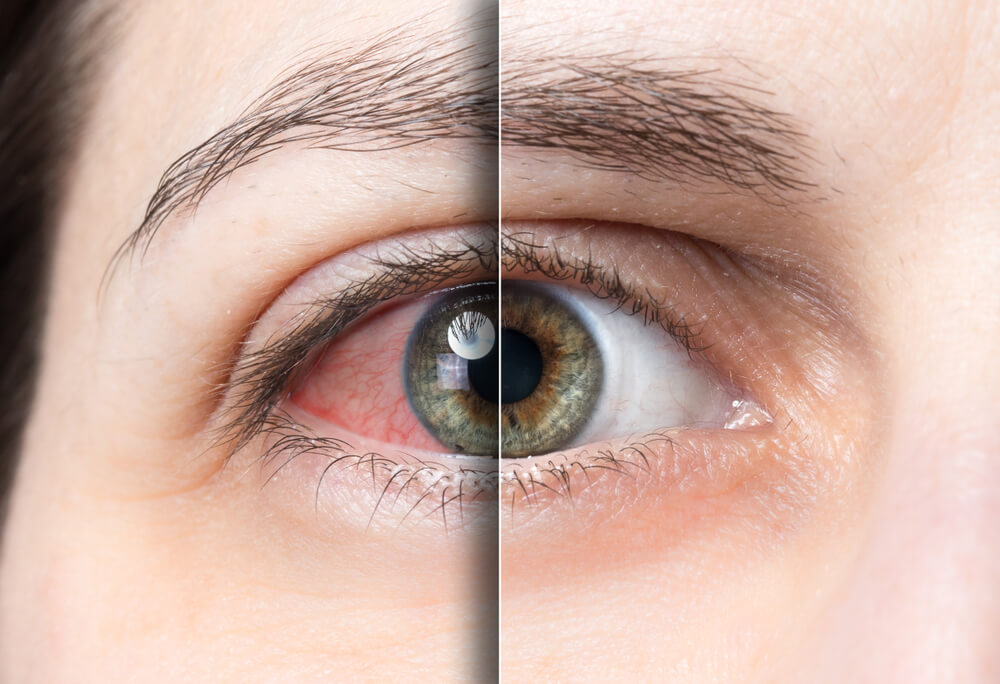If you’re an adult managing diabetes and are wondering if diabetes can cause dry eyes, you’ve landed in the right place. Dry eye syndrome (DES) is a serious concern for all diabetics, but it is particularly troublesome for diabetic adults.
This article explains what dry eye syndrome is, how it can impact you, and what you can do to proactively manage your diabetes dry eyes.

To many people, the idea of having dry eyes sounds harmless enough. After all, whether from spending too much time in front of a computer screen or feeling the effects of air conditioning, everyone has been in a situation where their eyes felt a bit on the dry side.
While in many instances having dry eyes is situational and easily remedied, having chronic dry eyes can actually be a serious condition requiring professional intervention. Healthy eyes require the constant production of tears to maintain their moisture. The water, oil, and mucus that comprise tears keep the surface of your eyes clear and smooth and enable you to see clearly.
When you don’t produce enough tears to give your eyes this vital moisture, you can develop dry eyes, also known as dry eye syndrome, dry eye disease (DED), keratoconjunctivitis sicca (KCS), and keratitis sicca. If left untreated, dry eyes may lead to eye infections, eye inflammation, abrasion of the corneal surface, corneal ulcers, and vision loss.
As of 2021, around 38 million people in the U.S. had diabetes, including those undiagnosed. Among them, 31.8 million were people ages 18 and over.
Diabetes is a disease that occurs when a person’s blood glucose is too high. This results when the body either isn’t producing adequate amounts of insulin or is not responding adequately to the insulin that is being produced. Over time, high blood glucose levels can impact many aspects of a person’s health, including the quantity and quality of tears they produce. High glucose results in fewer tears, which can result in the development of diabetes dry eyes.
Based on research findings, adults diagnosed with diabetes exhibit a notably higher prevalence of clinical indicators associated with dry eyes compared to their non-diabetic counterparts. Specifically, 56% of individuals with diabetes experience symptoms indicative of dry eyes.High blood sugar can cause nerve damage to the glands that produce tears, resulting in a decrease in tear production and/or a lower quality of tears, leaving the eyes without much-needed protection.
If you’re concerned that you may be developing DES, look for these common early stage diabetes eyes symptoms:
Since high glucose levels put adults at danger for DES, one of the most important ways to control DES is to keep their blood glucose levels under control. It’s also important to partake in regular eye examinations by a qualified professional to ensure any diabetes-related eye health issues are diagnosed early and addressed.
Your healthcare professional might recommend that you use artificial tears. They might also prescribe eye drops or advise you to purchase a specific over-the-counter product that can help lubricate your eyes. Other treatment options for dry eye syndrome might include:
Your eye doctor may also advise you to take one or more of the following steps to help prevent or alleviate diabetes dry eyes symptoms, including:
Dry eyes in adults with diabetes can cause serious complications, including vision loss. It’s important to take both preventative and remedial steps when it comes to eye care and protecting your eyesight and eye health. General eye health specialists can perform an eye exam, as well as additional testing, to put together a diabetes dry eyes treatment plan that suits your needs.
The physicians at Mid Atlantic Retina are leading experts in the treatment of all types of diabetic eye disease. To learn more about Mid Atlantic Retina, including our services and the types of eye diseases we regularly treat, call us at 1-800-331-6634 or request an appointment today.